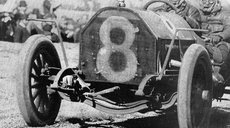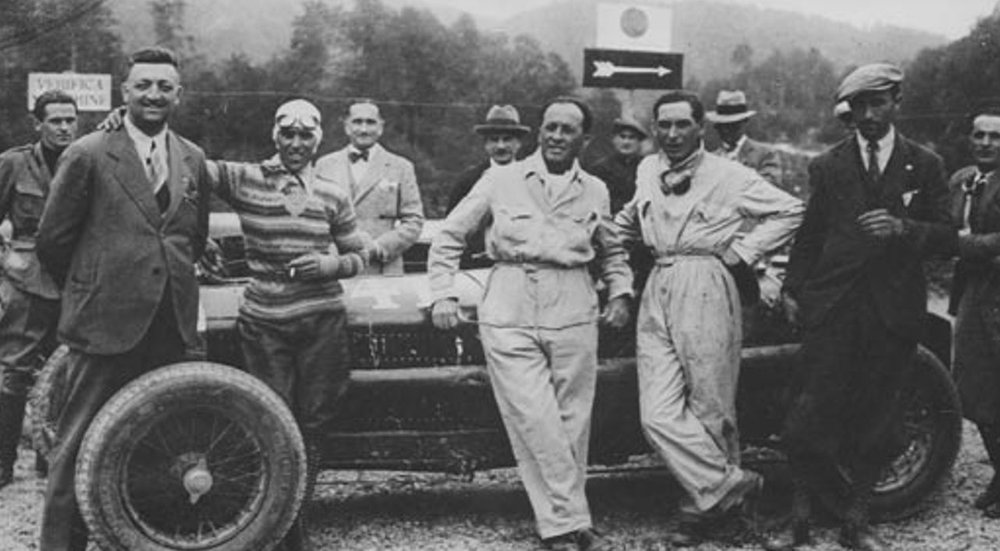Automobilia
LAPEL BADGES AND GREAT CAR, MOTORCYCLE AND BICYCLE OBJECTS
Outstanding collection for sale
The collection was started 40 years ago finding the first lapel badge. Today it´s one of the greatest collections in the world. The badges are manly from the period 1890-1940 but there are also a few badges of very high quality from the period 1940 up untill around 1970. It includes badges from cars, motorcycles, races, clubs, tyres, oil, sparkplugs, show, car manufactory, sales, chauffeurs etc.
It have taken 40 years to create the collection and over the years more collections from some of the grand old collectors was bought up.
The Collection is for sale if the right buyer turns up. It is a rare opportunity to acquire such a unique collection with such an unique history.
The collection will look great in any museum or fine garage and will tell an interesting history of motoring. It will interest everybody with gasoline in the veins.
In the collection there are apx. 3600 motoring badges and brooches of cars, motorcycles and motoring including many of the fine and rare car and motorcycle brands.
The collection includes more than 1750 brooches but also more than 1800 small but high quality badges.
Most of the collection is dispalyed in 8 glass cabinets of 65cm x 90cm. Click here to se the 8 cabinets and the descripion of the contest.
The full and detailed collection can be seen in the gallerys.
No badges will be sold out of the original collection, but doublets will be sold one by one on this site or on e-bay or Prewar Classic together with all the automobilia and other objects.
While collecting badges I picked up a lot of other nice automobilia which will be sold in the future. You can find it on this website.
Most of the badges are found in Denmark and many of them comes from old Danish collections. If you want to read the history of the lapel badge collection, which began back in the 1920's, please klick here on history.
You can see all the badges if you click here on gallery.
The pictures belov are a few of my favorit badges. Click on the Picture for larger image.
For many years Adler produced bicycles. This badge shows the bicycle logo with the text Adler Motor Wagen. This is from apx. 1899 before they got a real car logo.
Made by Christian Lauer, Germany.
This high quality brooch from the 1920's has great patina. Made from Fattorini & Sons, Bradford, England.
A very early enameld badge from De Dion Bouton. Apx. 1900.
This is the best Packard badge I have ever seen. I found this beautiful brooch on a sommerhollliday 35 years ago in Jylland, Denmark.
Extremly beautiful brooch from the French automobile producer Chenard & Walcker from apx. 1905-10.
The badge is showing the radiator of the car of this period.
Ellehammer was one of the pioneers of aviation but he also produced cars and motorcycles. This beautiful badge made from jeweler Heimbürger in Copenhagen shows the motorcycle. It´s made for the motorcycle club called Elleham which is also the name of motorcycle.
The motorcycle was produced between 1904-09 in apx. 1000 ex. It took me many years to find this badge and when I found it I drove through half the contry to pick it up.
Of course, the English had an automobile club, even in their colonies in Africa.
By the hallmarks you can see that this silver badge from the Orange River Colony is from 1905. Produced in Birmingham by the silversmith Lloyd, Paine & Amiel. A funny detail is that they have chosen to show a motorcycle even though the badge is made for an automobile club.
The Royal Danish Automobile Club was founded in 1901 and was the first Club in Scandinavia.This badge is very early and from before the club was proclaimed royal in 1912 and protected by king Christian X.
You will find that the collection of badges from the Royal Automobile Club is the finest and most complete in existence.
This radiatorshaped badge from Opel dates back to apx. 1912 is one of the most beautiful and high quality badges in the Collection.
The hallmark on the backside shows that this English Daimler badge is made in 1909 by the silversmith Robert Chandler in Birmingham. Even thoug this badge is extremely rare you will find it in 3 variants in the colletion.
A beautifully enameled badge from the Bugatti factory in Rabag from before 1926.
Less than a 100 special Bugatti racecars were produced in the Rabag-factory.
Made from Preissler in Pforzheim-
This badge together with 20 other badges was found in a small box that had been thrown out as garbage back in the mid 1980's. Lukely it was picked up and was included in this Collection. This badge and a variant are the only known exambles in existence.
Made in London in the late 1920's.
Made by Tove & Co, Ltd, London.
An Austro Daimer badge with the old logo with the Austrian duble eagle. Beautifully enameled and nice patina.
Made by A. Swerdt, Stuttgart, Germany.
This nice art-deco style badge from the Grad Prix in Bern in 1934 shows action and speed. Elegant design and great patina.
The race was the main voiturette race of the year 1934. The victory was astonishingly won by a MG K3 Magnette in front of 3 Bugattis T51A which took 2., 3., and 4. place.
Made by Huguenin Freres & Co, Le Locle.
This is truly a beautiful and grandiose badge. It shows two goddesses in a car wher the Wheels are on fire. One standing with wings on her back and another seated with a raised torch. They were aware of there appearance in the Automobile Club of Great Britan and Ireland. A steward must have had some kind of service function at the club.
Made by West & Son, College Green, Dublin, Ireland.
Speedwell was a well known producer of motoroil back in the 1920-30's. It was a British brand founded in London and they used the slogan "Running Made Easy" symbolized by a black man running for his life being chased by a lion.
An early and beautiful Büssing badge with nice patina and of high quality.
Made by Christian Lauer, Nürnberg, Germany.
This badge shows the Crossley car as it looked in 1914.
Beautifully made by Thomas Fattorini in Bolton with enamel and gilding.
Pilain Lyon is a rare car and this badge in a radiatorshape from apx. 1910 is as rare as the car.
This is a typical American badge in celluloid. Mora was an early New Yorker car which was produced between
1906-10.
Made by Whitehead & Hong Co, Newmark N.J. USA.
Minerva was a Belgian producer of luxery cars between 1902-38. This is an early and bautiful examble of the Minerva badge. The head of the goddess Minerva is fixed on top of the beautifully enameled badge. Although the Minera badge is rare you will find 10 variants of this brooche in the collection.
In the Collection you will find many Michelin badges, but this just have a litle extra, with the Michelin man riding the motorcycle.
Made by W.O. Lewis, Birmingham, England.
This badge from Rally Monte Carlo shows the view from the front seat of a 1932 car. You will find many nice Monte Carlo and other race badges in the collection.
Made by Fraisse-Demex, R. du Temple, Paris.
Another beautiful Nazzaro badge with the Fiat inspired radiator.
Made from C. Paccagnini in Milano
Boucie Oleo was an early procucer of motoroil and spark plugs.On this badge from around 1910 you can see the logo of Boucie Oleo as a head of a black man sitting in the sky watching over and protecting the flying airplane.
This badge is from the famus Lanz Bulldog tractor. It's made by the badge procucer Josef Preissler in Pforzheim, Germany.
This badge from Guy Motors is one of the most beautiful in the Collection. Look at the fantastic colours of the enamelwork.
The patina of the metal shows really nice jewellery craftmanship.
This is a typical French badge - beautifully designed. Vermorel procuced cars between 1908-30.
This is at typical nice American watchfob. According to the image of the car on the badge it must be from around 1918.
Made by L.F. Grammes & Sons, Allentown, PA, USA.
This badge was given to a boy who visited the Thrige factory in Odense together with his father in 1910. Thrige produced apx. 130 cars from 1909-18. This badge is one of very few in existence.
Of the cars none have survived.
The automobile is comming right towards you in smoke and dust showing speed and power. From the style and design this badge from the Motorwagen-verein Frankfurt A.M. must be from apx. 1900.
Made by W. Schwind, Frankfurt, Germany.
Also small badges can be really nice. The famous Fiat race driver Nazzaro made his own car in 1911. The torn radiator of this badge shows speed and danger combined with racing. With the 4.4 litre Nazzaro-car shown belov he won Targa Florio Race 1913.
The badge is made by Gipicchiani, Firenze, Italy.

This is a rare and early badge from Pirelli tyres. With elegance and humor it shows action, speed and toughness.
Badges in use at a race

The racedrivers are standing in front of an Alfa Romeo together with Enzo Ferrari.
The round badge in the lapel of Mr. Ferrari and in the lapel of other people in the picture most likely is the beautiful badge of Alfa Romeo.
.jpg)
